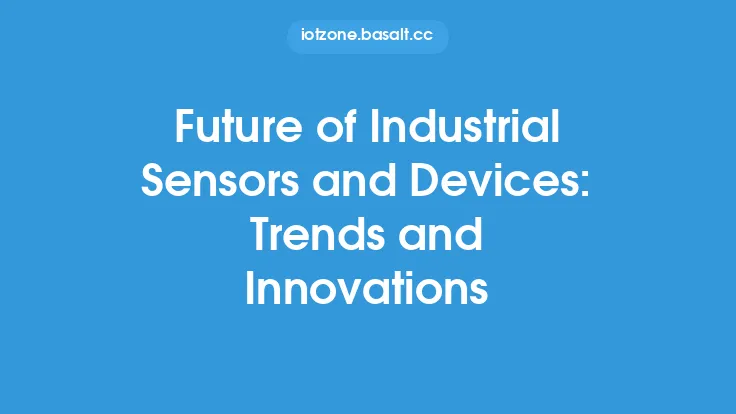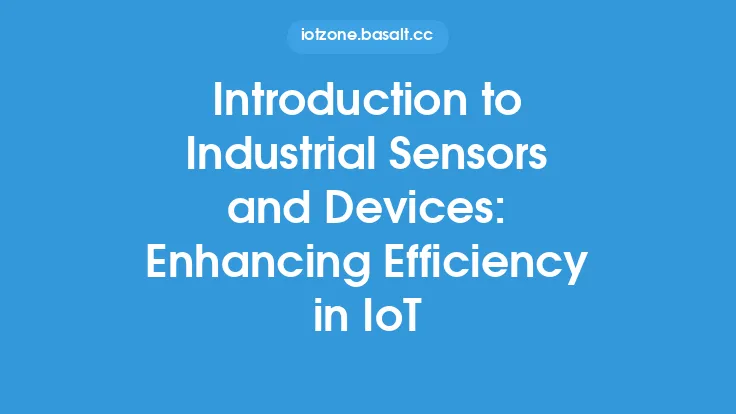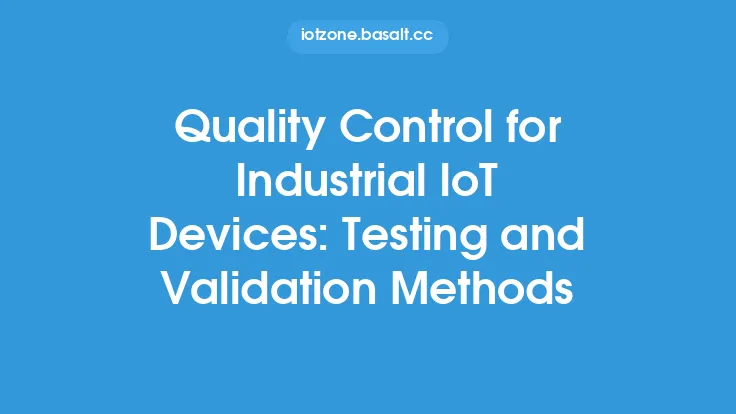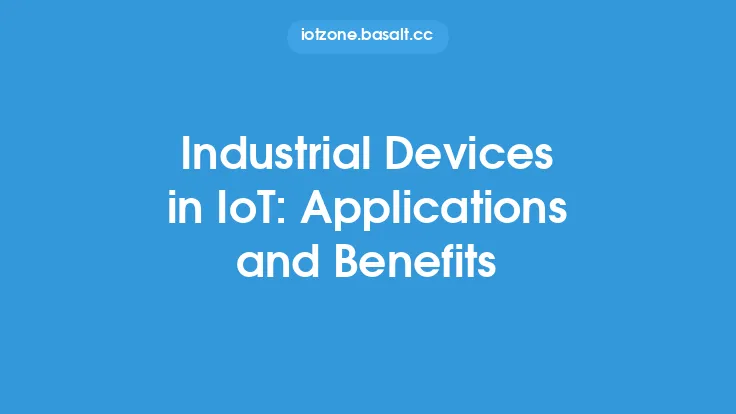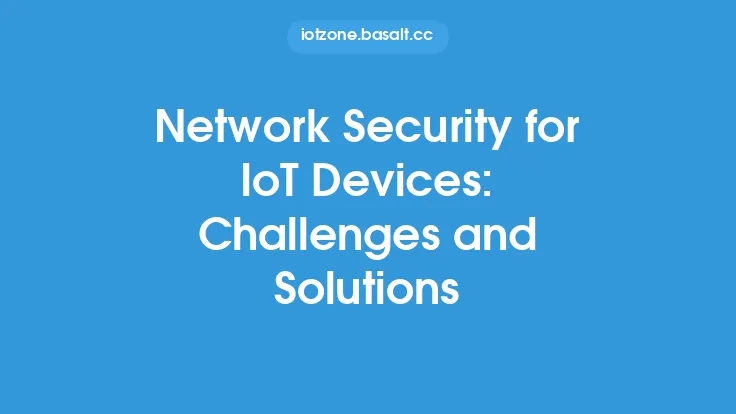The increasing use of industrial devices and sensors in various industries has led to a significant rise in the attack surface, making them a prime target for cyber threats. As these devices are connected to the internet, they become vulnerable to various types of attacks, which can have severe consequences on the overall security and reliability of the industrial control systems (ICS). Therefore, it is essential to consider the security aspects of industrial devices and sensors to prevent any potential threats and ensure the smooth operation of the industrial processes.
Security Risks and Threats
Industrial devices and sensors are exposed to various types of security risks and threats, including unauthorized access, data breaches, malware attacks, and denial-of-service (DoS) attacks. These threats can be launched by hackers, nation-state actors, or even insider threats, and can have devastating consequences on the industrial processes, including disruption of operations, damage to equipment, and even loss of life. For instance, the Stuxnet worm, which was specifically designed to target industrial control systems, caused significant damage to Iran's nuclear program in 2010. Similarly, the NotPetya ransomware attack in 2017 affected several industrial companies, including Merck and Maersk, resulting in significant financial losses.
Security Considerations
To mitigate the security risks and threats associated with industrial devices and sensors, several security considerations must be taken into account. These include:
- Network Segmentation: Industrial devices and sensors should be isolated from the rest of the network to prevent lateral movement in case of a breach.
- Access Control: Strict access control measures should be implemented to ensure that only authorized personnel have access to the industrial devices and sensors.
- Encryption: Data transmitted by industrial devices and sensors should be encrypted to prevent eavesdropping and interception.
- Authentication: Industrial devices and sensors should be authenticated to ensure that only authorized devices are connected to the network.
- Regular Updates and Patching: Industrial devices and sensors should be regularly updated and patched to fix any vulnerabilities and prevent exploitation.
Security Solutions
Several security solutions can be implemented to protect industrial devices and sensors from cyber threats. These include:
- Intrusion Detection and Prevention Systems (IDPS): IDPS can detect and prevent intrusion attempts on the industrial network.
- Firewalls: Firewalls can block unauthorized access to the industrial network and prevent malicious traffic from entering the network.
- Virtual Private Networks (VPNs): VPNs can encrypt data transmitted by industrial devices and sensors and provide secure remote access to the industrial network.
- Industrial Control System (ICS) Security Information and Event Management (SIEM) Systems: ICS SIEM systems can monitor and analyze security-related data from industrial devices and sensors to detect and respond to security incidents.
- Security Orchestration, Automation, and Response (SOAR) Solutions: SOAR solutions can automate and streamline security incident response processes to reduce the mean time to detect (MTTD) and mean time to respond (MTTR) to security incidents.
Secure Communication Protocols
Industrial devices and sensors use various communication protocols to transmit data, including Modbus, Profibus, and Ethernet/IP. However, these protocols were not designed with security in mind and are vulnerable to cyber threats. To address this issue, secure communication protocols such as OPC UA (Open Platform Communications Unified Architecture) and MQTT (Message Queuing Telemetry Transport) can be used. These protocols provide encryption, authentication, and access control features to ensure secure communication between industrial devices and sensors.
Device Security
Industrial devices and sensors should be designed with security in mind to prevent vulnerabilities and exploits. This includes:
- Secure Boot: Industrial devices and sensors should have a secure boot mechanism to ensure that only authorized firmware is loaded.
- Secure Firmware Updates: Industrial devices and sensors should have a secure firmware update mechanism to prevent unauthorized updates.
- Hardware-Based Security: Industrial devices and sensors should use hardware-based security features such as Trusted Platform Modules (TPMs) and Hardware Security Modules (HSMs) to provide an additional layer of security.
Incident Response and Recovery
In case of a security incident, it is essential to have an incident response and recovery plan in place to minimize the impact and restore operations quickly. This includes:
- Incident Detection: Quickly detecting and identifying the security incident.
- Incident Containment: Containing the security incident to prevent it from spreading.
- Incident Eradication: Eradicating the root cause of the security incident.
- Recovery: Restoring operations and recovering from the security incident.
- Post-Incident Activities: Conducting post-incident activities such as incident reporting, root cause analysis, and lessons learned to improve the overall security posture.
Regulatory Compliance
Industrial devices and sensors are subject to various regulatory requirements and standards, including the North American Electric Reliability Corporation (NERC) Critical Infrastructure Protection (CIP) standards, the International Electrotechnical Commission (IEC) 62443 standards, and the National Institute of Standards and Technology (NIST) Cybersecurity Framework. Compliance with these regulations and standards is essential to ensure the security and reliability of industrial control systems.
Best Practices
To ensure the security of industrial devices and sensors, several best practices should be followed, including:
- Conducting Regular Security Assessments: Conducting regular security assessments to identify vulnerabilities and weaknesses.
- Implementing Security Awareness Training: Implementing security awareness training for personnel to educate them on security best practices and phishing attacks.
- Using Secure Communication Protocols: Using secure communication protocols such as OPC UA and MQTT.
- Implementing Access Control: Implementing access control measures such as role-based access control and multi-factor authentication.
- Regularly Updating and Patching: Regularly updating and patching industrial devices and sensors to fix vulnerabilities and prevent exploitation.
